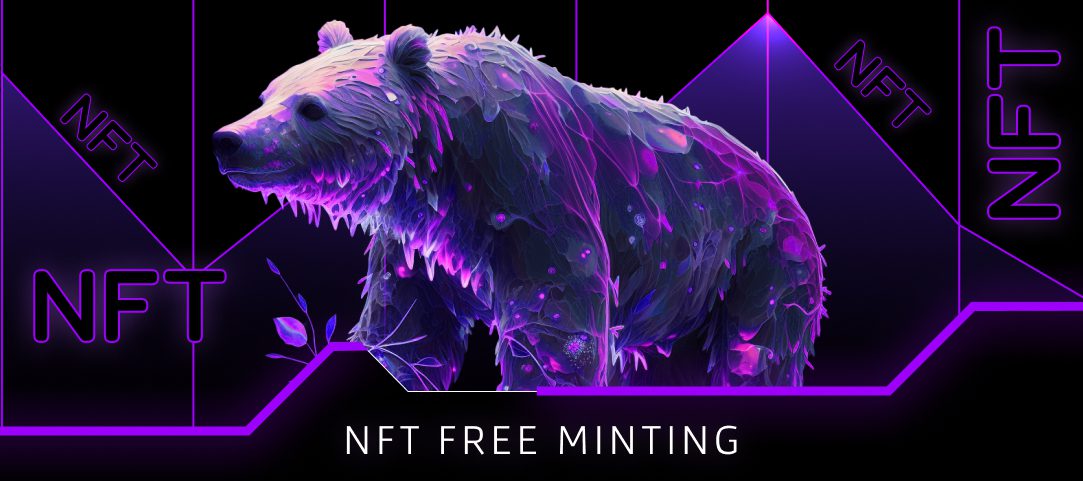As the chilling effect of the crypto winter is still widely felt in 2023, NFT creators have recently been turning toward the free-to-mint business model. In this climate, buyers are scarce and by using this approach, projects such as Goblintown, WADGIE, and the Octagon have tried to shift the perspective and bring more value to NFTs in general.
But what does free NFT minting exactly entail and how come it might have a hand in rescuing the NFT market? The answers lie below.
What are free-to-mint NFTs?

The traditional way of minting NFTs involves expenses for buyers ranging from $1 to $500 or even higher, which come in the form of blockchain costs (i.e. gas fees). There are also additional costs in the form of NFT marketplace fees.
Considering the actual price of the non-fungible token as well as the fees, NFT projects easily turn away many prospective buyers. Needless to say, it’s an issue especially prominent in times of market hardships such as this one.
Enter free-to-mint. While the associated fees do remain part of the financial equation, creators who opt for this approach are essentially giving away their NFTs for free.
Sounds like madness? On the contrary, this business model has been proven to bring results. Let’s now explain why many projects are using it and what benefits it provides to the overall level of NFT appeal – apart from being free, of course.
Benefits of NFT free minting

Exclusive, free, and valuable
As there’s a great interest in free-to-mint NFTs, there’s also an air of exclusivity surrounding them. Playing on FOMO, they attract many collectors, but only the selected few, most often determined through whitelists, will actually get their hands on them. And this hype and competitiveness drive the value up, leading to a healthier overall market.
Even if they don’t actually profit from selling NFTs, this is quite useful for NFT creators as they receive a percentage of further sales of the same NFTs on secondary markets. In the long-running period of the bear market, you must make some compromises.
From fanbase to profit
For any NFT project, creating buzz around it is essential. What you end up with is a fanbase eager to check out your new and upcoming collections and contribute to the growth of the overall project. And what better way to attract those fans than giving away free products?
Later on, however, once a project has established a reputable and popular presence in the NFT market, it may potentially switch the business model and start actually selling those NFTs. This is a way for projects to revert to full earnings, apart from just receiving royalties from secondary markets.
Historical success stories
Of course, the simple fact of being free is bound to attract collectors, but double so as such collections have historically been proven to make huge profits. For instance, there’s the famous case of a collector acquiring a CryptoPunks NFT in a free mint back in 2018 for some $450 in fees and then selling it in 2021 for $4.4 million!
Therefore, people in the know are on the lookout for free-to-mint NFTs, which in turn brings additional exposure to creators of such projects.
Reducing risk and increasing trust
There’s been plenty of scams in the NFT market, but projects offering free minting most often do turn out to be legitimate. As scammers are looking to make a quick buck, it doesn’t make much sense for them to simply give away the NFTs.
Therefore, collectors have much less need to fear being conned, and the level of trust in the overall NFT market is significantly increased.
As expected, scams in the world of free-minting do exist nevertheless, but they mostly rely on malignant smart contracts. In turn, this means they’re not hard to discover. As always, standard practices of checking the sources of smart contracts or using cold wallets to store assets are still highly encouraged – better safe than sorry.
Beyond trading: the power of utility NFTs
Being part of the so-called NFT 2.0 phase, such NFTs are not used as assets for trading, but they actually provide some form of a utility function. And businesses from all spheres of life may rely on free-to-mint utility NFT 2.0s in order to build a community.
Some free utility NFTs give project governance rights, i.e. having a say in decisions relevant to the project’s development and boosting the level of decentralization in the process. Others give exclusive access to events, such as webinars, panels, or fun community meetups. Others yet provide discounts and promotions.
Whatever the utility function may be, it has proven to be a useful benefit for businesses and community members alike.

Conclusion
The crypto bear market has taken many victims overall, and the NFT space is no different. But with the development of the free-to-mint model and its benefits, artists and projects may yet defy and rise above the unfavorable chances ahead of them. And in time, who knows what the future holds – the NFT market may yet again thrive in its former glory.










